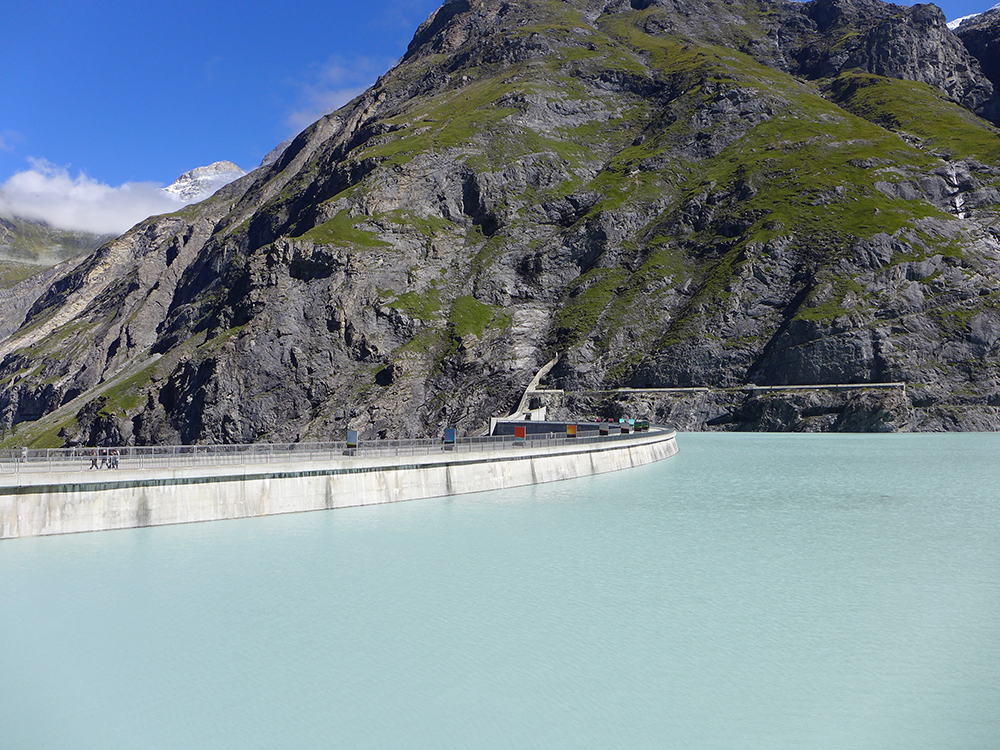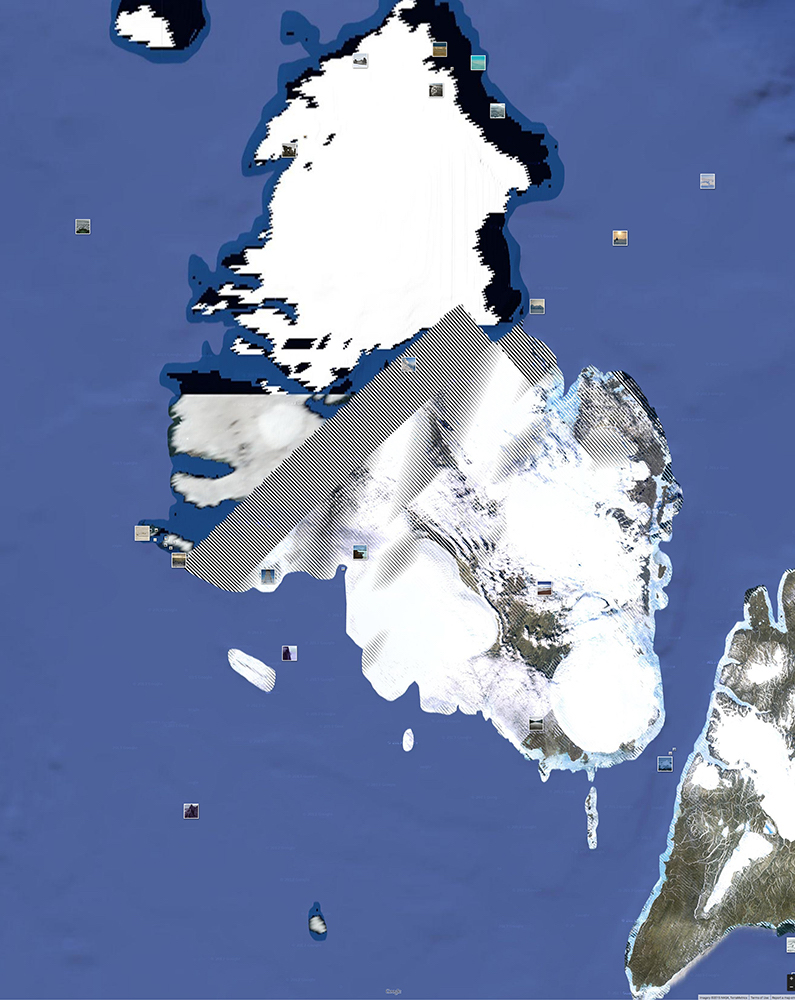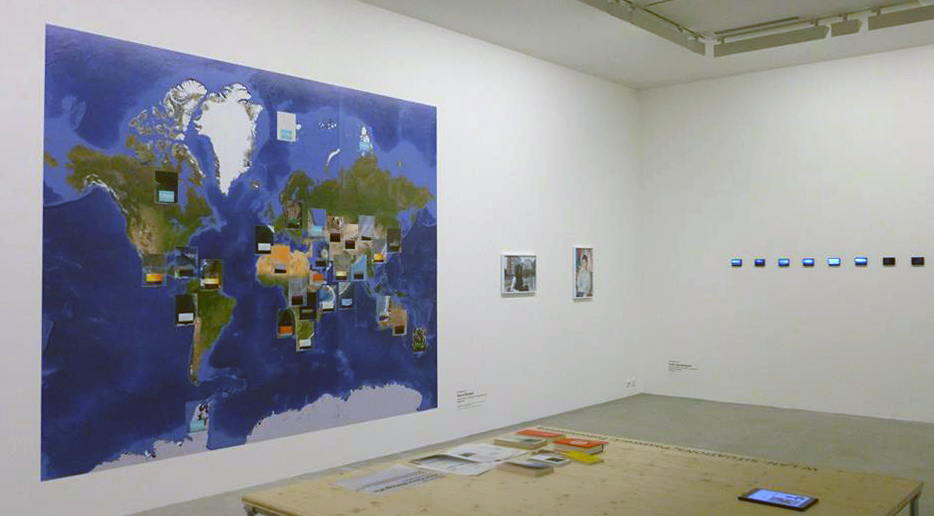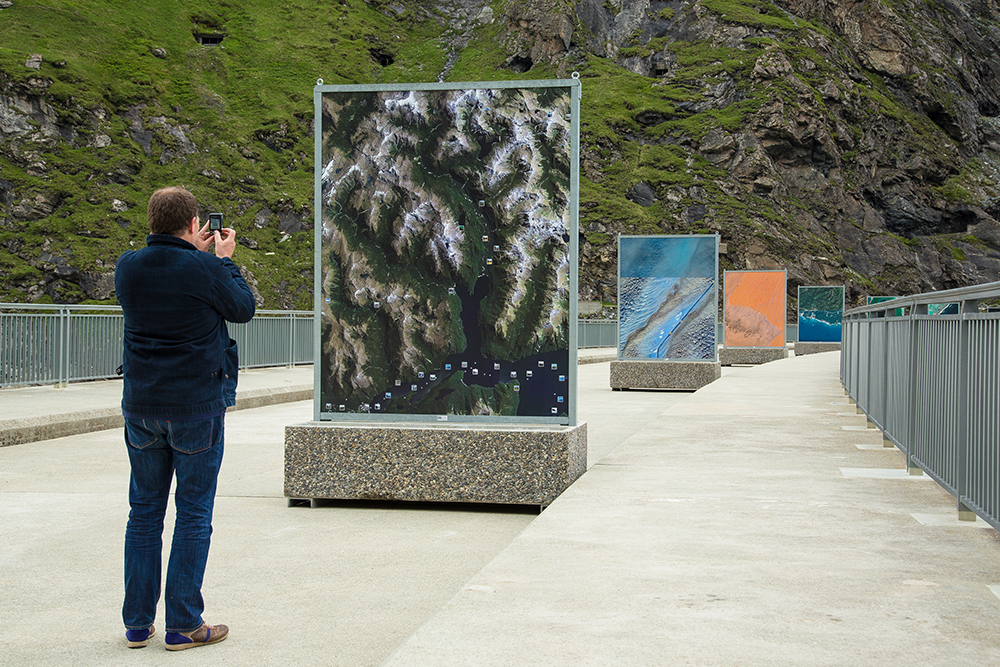Kasia Klimpel creates ‘virtual travel images’, breaching the walls of Google Maps with fictional landscapes. Playing with the unpredictability of algorithms and geotags, these handmade images disrupt the unerring digital world. The artist is showing The Grand Tour at Fotomuseum Winterthur, as part of SITUATIONS, until 27 September.
When did you begin to form the work that comprises The Grand Tour, and what prompted you to explore Google Maps in this way?
I started working on the project The Grand Tour in 2011. At that time I was photographing paper constructions with the idea of creating an illusion of a landscape. These fake landscapes were inspired by images found through Google searches, using key words such as; landscape, beautiful landscape, green landscape, etc. While browsing the internet I stumbled upon photos that were geotagged in Google Maps. It turned out they had to be submitted, judged and accepted to make part of the system. I decided to try to bring my own fake landscapes back to the digital world, where they had (in many ways) originated from, thanks to the Google image search. On the one hand I was giving the traditional specificity of a place where the photo was supposedly taken, ‘there I was, and I made this picture’, on the other hand, these photos of pieces of paper as landscapes, that had been accepted to Google Maps, were undermining the supposedly true and real digital maps.
Why has Google Maps become such a rich source of inspiration for artists in the last couple of years?
It seems to me a very natural development and it’s not Google Maps only. There are infinite digital resources available out there in the internet world: GSV, webcams, Google Maps, Instagram, flickr to name just a few — a huge wealth of new materials to work with and reflect upon. To me the very interesting aspects of the digital photographic image are its fluidity and open format, as well as the on- and off-screen ways of presentation, which bring much more possibilities than previously, in the case of analogue photography.
In the digital age, do you think we accept photographic imagery more or less readily as the absolute truth?
I believe that more and more we realise that photographic imagery is a construct, be it due to photoshop, filters, software applications, digital imaging or simply making a decision about framing of a shot picture or a screenshot. Selfies have a lot to do with photography as a spectacle, although it pretends to be truthful and authentic. It is not anymore about documenting reality, but creating a staged proof that someone was at a certain place, did something or looked a certain way.
A while ago when I visited the Rijksmuseum it was impossible to see the paintings, just the crowds of people in front of them. Most visitors with some kind of a camera in their hands were queuing up to take a photo of a painting and immediately moved on to the next one, looking at paintings only through the screen of a camera. I find it fascinating that the screens become mediators of reality, or maybe it’s the screens now which become the world. Most of these photos will probably not be materialised and will only come to existence when they are circulated or distributed by the action of sharing and uploading onto social media.
How has the role of cartography changed in recent years, both as a public tool and within a contemporary art context?
With the current realism and resolution of Google Maps it is no longer the territory that precedes the map. Unlike the traditional map, the digital one is storing an unknown before an amount of different kinds of information, from the geospatial to commercial data. We can visit any place around the globe by zooming in to lower levels on the map or having a virtual walk in the high-resolution Google Street View environment. Anyone who has the internet can access this unprecedented geographical information. Our spatial experience has changed dramatically both online and offline with this wealth of available data. However, let’s not forget, that the real looking earth is a projection of a 3 dimensional object to a 2 dimensional screen. And, yes of course there are artists who reflect on these technological conditions and the new aesthetics.
What do you think the future of photography is, as an art form?
Let me answer in a different way. My project The Grand Tour is currently shown at the Fotomuseum Winterthur as part of the SITUATIONS exhibition. SITUATIONS is a new exhibition format prepared within a short period of time, each devoted to a key cluster relevant to the current digital developments. The exhibition can have any form and coexists with a growing online archive. The key clusters so far: relations, seeing machines. Also, very worthwhile is a blog ‘still searching’ (http://blog.fotomuseum.ch
), where now and then a photography theorist, philosopher or photographer is asked to reflect on the medium of photography. E.g: a recent one by Melanie Bühler on the ‘contemporary role of photography within digital culture and artistic practice’. Both of these initiatives could give a glimpse of what is to come.
The Grand Tour is showing as part of SITUATIONS at Fotomuseum Winterthur until 27 September










